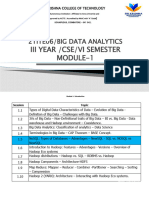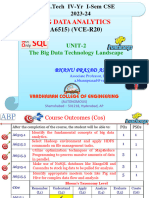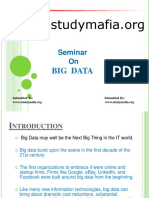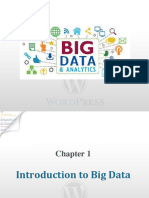0% found this document useful (0 votes)
9 views25 pagesChapter-1-Introduction To Big Data
The document provides an introduction to Big Data, explaining its significance, characteristics, and the challenges it addresses compared to traditional systems. It outlines the 'V's of Big Data: Volume, Velocity, and Variety, and discusses various NoSQL database types and their applications. Additionally, it highlights use cases and architectural patterns for implementing Big Data solutions effectively.
Uploaded by
f524hrkxmtCopyright
© © All Rights Reserved
We take content rights seriously. If you suspect this is your content, claim it here.
Available Formats
Download as PDF, TXT or read online on Scribd
0% found this document useful (0 votes)
9 views25 pagesChapter-1-Introduction To Big Data
The document provides an introduction to Big Data, explaining its significance, characteristics, and the challenges it addresses compared to traditional systems. It outlines the 'V's of Big Data: Volume, Velocity, and Variety, and discusses various NoSQL database types and their applications. Additionally, it highlights use cases and architectural patterns for implementing Big Data solutions effectively.
Uploaded by
f524hrkxmtCopyright
© © All Rights Reserved
We take content rights seriously. If you suspect this is your content, claim it here.
Available Formats
Download as PDF, TXT or read online on Scribd
/ 25





















































































